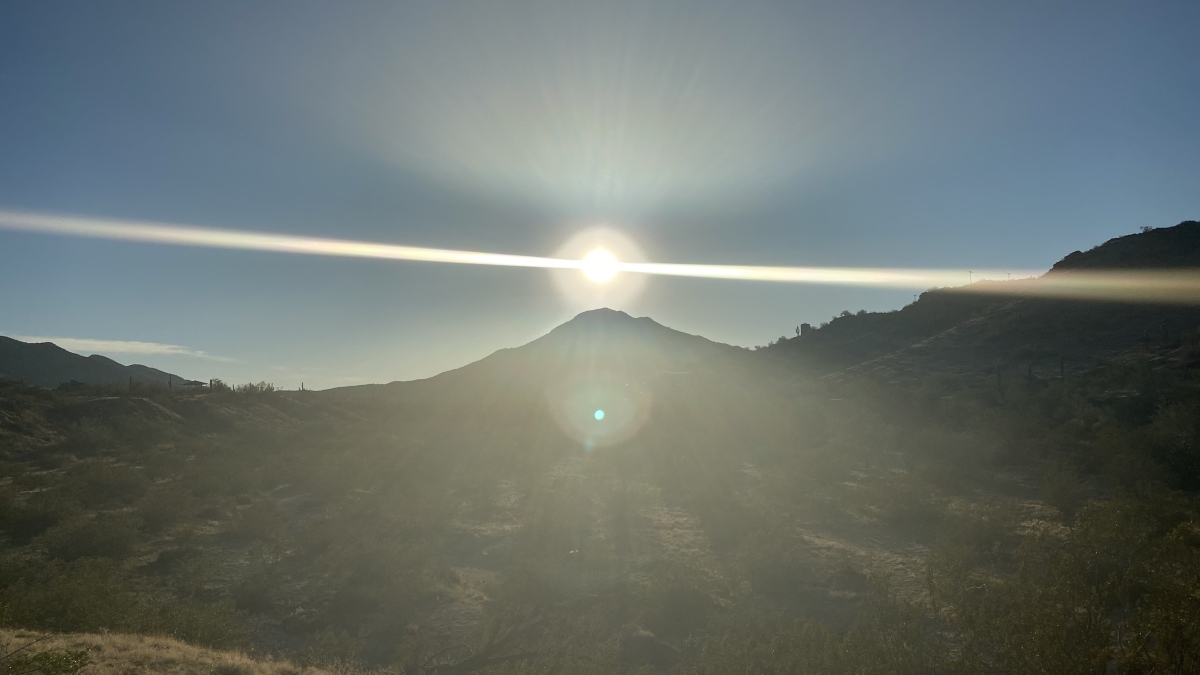“There is nothing new under the sun, but there are new suns.”
— Octavia Butler
Viruses, vaccines, voting, virtual fatigue and Vespa mandarinia (remember “murder hornets”?): 2020 certainly has given us much to ponder. With such challenges afoot, the Department of English at Arizona State University has curated an eye-opening, uplifting course list for spring 2021 to help you cope.
ASU English promises an “aha!” moment or two in its upcoming sessions on leadership, plague literature, videogames, borderlands poetry and internet language. Courses on African American literature, environmental media, fiction writing and culturally relevant classrooms also bring fresh takes.
Some offerings provide historical context for understanding the present moment. Others develop practical skills for the future.
Registration information for these and a sampling of other spring semester classes is provided below. Find more in the ASU class schedule (search by “ENG,” “FMS,” “LIN” or “APL” prefixes), searchable by both online and in-person/ASU Sync options.
1. ENG 472 – Rhetoric of Leadership
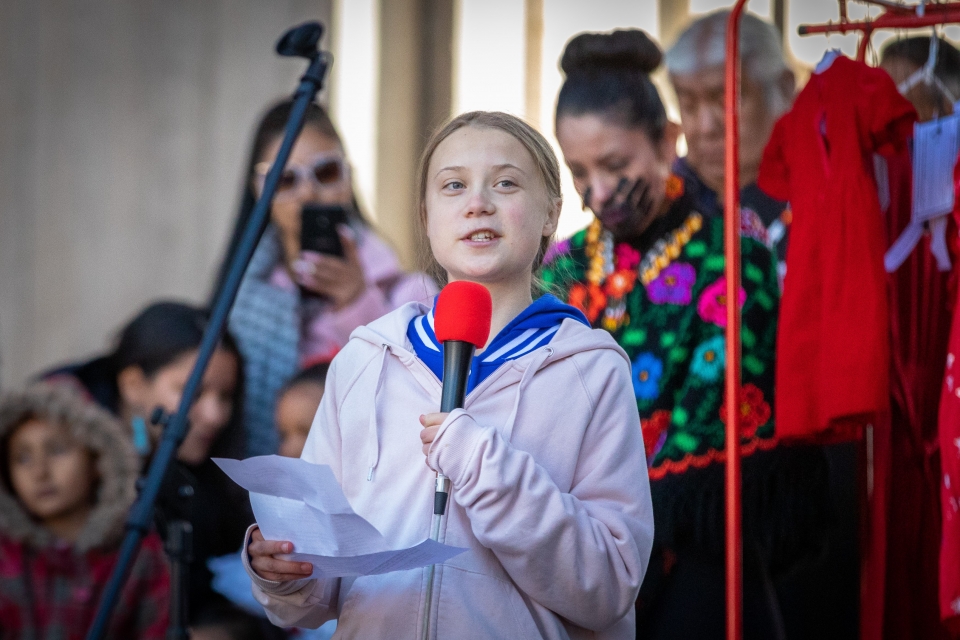
Greta Thunberg addresses climate strikers at Civic Center Park in Denver. Photo credit Andy Bosselman, Streetsblog Denver on Flickr. Used under CC 2.0.
What it is: Leadership is more than a job description or character trait; it’s a complex rhetorical practice. ENG 472 – Rhetoric of Leadership develops skills in rhetorical analysis and discusses strategies for navigating challenges in current and/or future leadership positions. At the end of the course, students will be able to formulate a solution to a contemporary public crisis.
Why it matters: From global pandemics to wide-scale social unrest, 2020 has shown us that being leader means encountering moments of crisis. In an election year, informed citizens have an opportunity to closely consider and choose leaders who inspire positive social, political and institutional transformation.
Who’s in charge: Assistant Professor Jacob Greene developed and manages this online course, to which a number of award-winning ASU faculty – including Krista Ratcliffe, Kathleen Lamp, Keith Miller, Stacey Moran, Peter Goggin and Kyle Jensen – contributed lectures and assignments. Greene, a specialist in digital writing, is the co-editor of issue four of the writing, media and ecology journal Trace, themed “Writing New Material for Digital Culture” (2020).
Who should take it: Undergraduates of any major currently enrolled in ASU Online and who have interests in rhetoric, writing, literacy, leadership, communication, persuasion, argument, advocacy or politics. Limited iCourse seats for Tempe campus undergraduate students are also available. Some prerequisites apply; see course catalog for specifics.
If you register: Rhetoric of Leadership (class # 29813) is offered through ASU Online in Session A and as a Tempe campus i-course (class # 20993).
2. ENG 414 – Studies in Linguistics: Language on the Internet

OMG! LOL: Internet Slang added to Oxford English Dictionary. Image from PC World created by See-ming Lee 李思明 SML / SML. Used under CC-BY-NC-ND 2009.
What it is: This course is an exploration of the history and analysis of memes, emoji, typographical tone of voice, and more. ENG 414 – Language on the Internet offers a framework for treating internet language as a valid area for empirical research. Participants are encouraged to draw from their own experiences.
Why it matters: “Because Internet.” That’s the title of a 2019 book by Gretchen McCulloch – also this course’s text and its central premise: that we must understand the digital forces acting upon language if we are to communicate with each other in meaningful ways.
Who’s in charge: Assistant Professor Kathryn Pruitt is a phonologist – someone who studies systems of sounds in languages – and teaches in the linguistics and applied linguistics program in the Department of English.
Who should take it: Any undergraduate with an interest in language, linguistics, communication, digital media, popular culture, technology or internet culture who has met language course prerequisites; see course catalog for details.
If you register: Language on the Internet (class # 21050) meets Mondays and Wednesdays from 3 to 4:15 p.m. on ASU’s Tempe campus or on Zoom via ASU Sync.
3. FMS 394 – Media and the Environment

BAN investigator Clement Lam takes a soil sample along a riverside where circuit boards were treated with acid and burned openly. Image from Basel Action Network on Flickr. Used under CC 2.0.
What it is: How do natural landscapes factor into the production, design, and use of media technologies and infrastructures? FMS 394 – Media and the Environment is an introduction to critical and theoretical approaches within media studies that explores the relationship between humans, media technologies and our environments. Students arrive at an understanding that all media — from stone, to paper, to film, to television, to the internet – are assemblages of both nature and culture.
Why it matters: In an era of climate change, a purely mediated reality poses an existential challenge for the future. How do we make our media sustainable?
Who’s in charge: Assistant Professor Lisa Han, whose past work has focused on mediation of seabed landscapes, is the course instructor. She has also published work on fetal ultrasound, abortion media and internet freedom.
Who should take it: Undergraduates in any major who have an interest in film, media, technology, environmental engineering, infrastructure, sustainability, digital humanities or environmental humanities.
If you register: Media and the Environment (class # 30237) meets Mondays and Wednesdays from 6 to 7:15 p.m. on Zoom via ASU Sync.
4. ENG 294 – Plagues, Epidemics and Literature
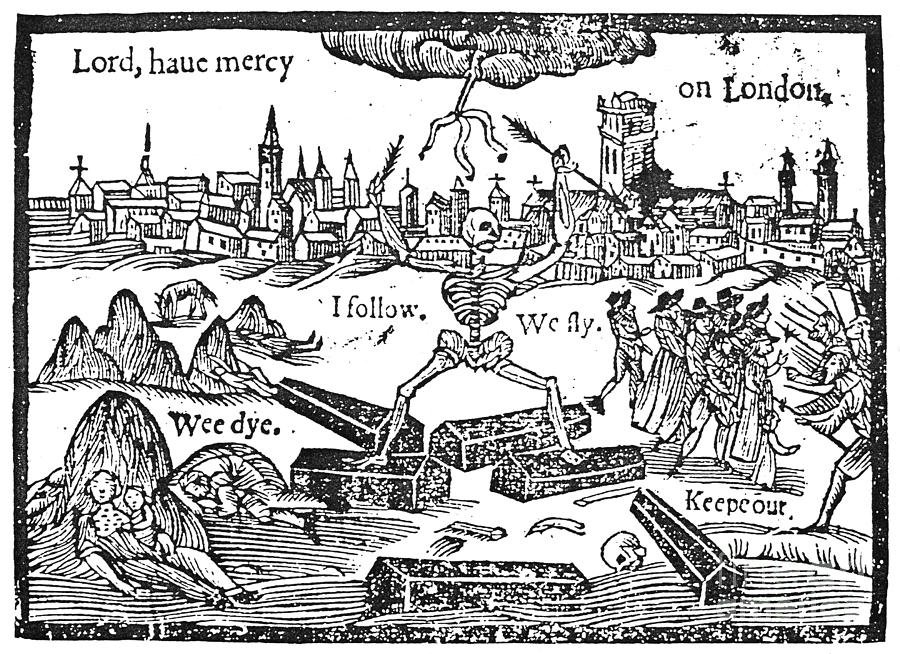
The black death in London. Woodcut, circa 1665. Public domain image from Wikimedia Commons.
What it is: The COVID-19 pandemic will be one of the defining cultural experiences of our time, but for centuries human beings have confronted and been shaped by epidemic diseases. ENG 294 – Plagues, Epidemics and Literature, a timely introduction to the burgeoning health humanities field, analyzes narratives of epidemic, contagion and quarantine — past, present and future. What do these stories reveal about how communities respond?
Why it matters: In this global watershed moment, considering cultural responses to the spread of pandemics like COVID-19 may uncover possible solutions.
Who’s in charge: Associate Professor Cora Fox, director of the Interdisciplinary Health Humanities Certificate in The College of Liberal Arts and Sciences and the Health Humanities Initiative in the Institute for Humanities Research teaches this course.
Who should take it: Undergraduates of any major with an interest in public health, medicine, literature, history, fiction, nonfiction, theater, disease, religion or health humanities, who have met basic first-year composition requirements.
If you register: Plagues, Epidemics and Literature (class # 31725) meets Tuesdays and Thursdays from 3 to 4:15 p.m. on Zoom via ASU Sync.
5. ENG 394 – Poetics of the Borderlands
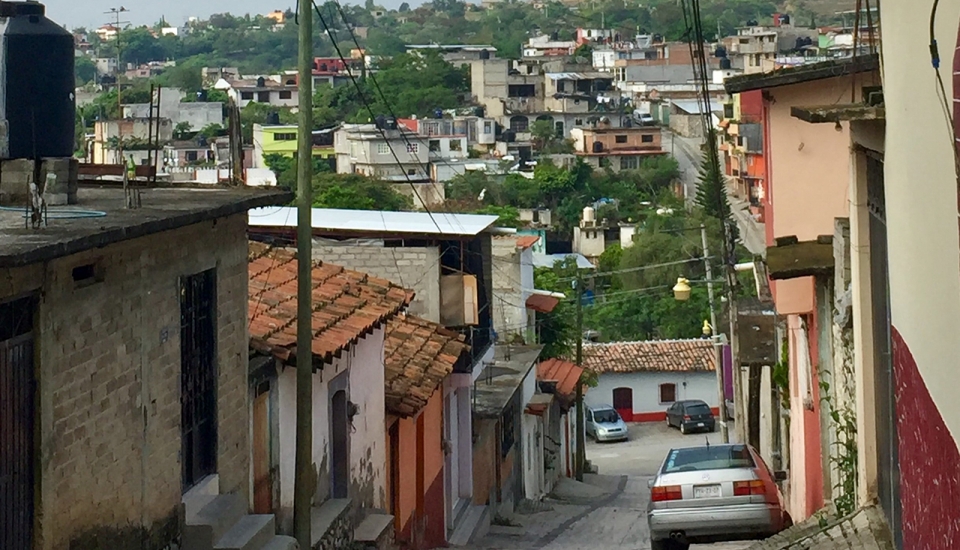
Street scene in a border city. Image courtesy Maritza Estrada.
What it is: This place-based exploration looks at poetry and stories of the U.S.-Mexico border. ENG 394 – Poetics of the Borderlands focuses not only on the geopolitical border — including its physical land and space — but interior borders as well, like absence, desire, body, family, grief, and exile. Students read and write poetry while engaging with nonfiction, fiction, film, zines, and other multimedia/art.
Why it matters: As scholars, thinkers and writers from many disciplines, it is vital to create conversations, art and community within and outside academic fields – in other words, across borders.
Who’s in charge: Maritza Estrada, the artistic development and research assistant for ASU’s Center for Imagination in the Borderlands and a graduate student in creative writing is the course instructor. Estrada is mentored by center director and Associate Professor Natalie Diaz, a MacArthur Fellow and the Maxine and Jonathan Marshall Chair in Modern and Contemporary Poetry.
Who should take it: Any undergraduate with an interest in poetry, fiction, nonfiction, storytelling, art, borderlands or border culture who has met basic first-year composition requirements.
If you register: Poetics of the Borderlands (class # 32119) meets Wednesdays from 4:30 to 7:15 p.m. on Zoom via ASU Sync.
6. ENG 606 – Culturally Sustaining Pedagogy
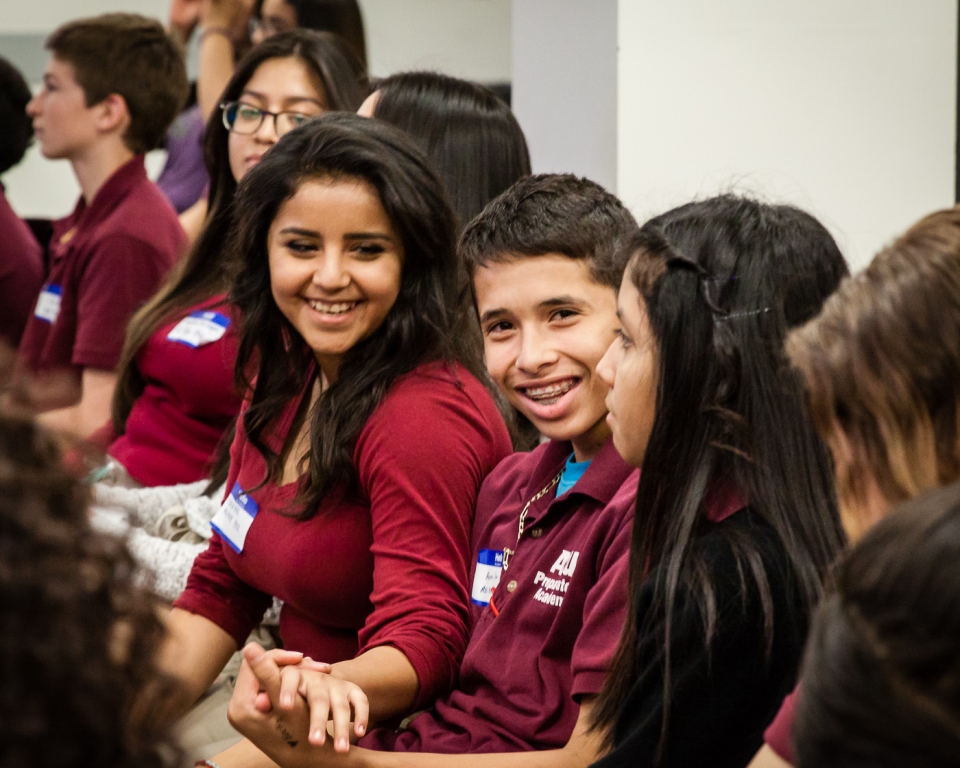
Image of students at ASU's 2015 El Dia celebration. Photo by Bruce Matsunaga/ASU.
What it is: This education course focuses on developing curriculum and instructional strategies that reflect the diversity of students’ cultural and linguistic backgrounds. ENG 606 – Culturally Sustaining Pedagogy will help students begin to articulate their own, critically informed approaches to youth cultures, languages and literacies in classroom settings.
Why it matters: Today’s educators are most effective when they acknowledge and include community and student knowledge, expertise and understanding in the constructions of pedagogies. Validating students’ lived experiences inside the classroom is a step toward justice and equity in the larger world.
Who’s in charge: Assistant Professor Sybil Durand, a member of the faculty in the English education program, teaches this course. Durand specializes in youth participatory action research (YPAR) and most recently published the co-authored article in The Urban Review (2019): “’It’s Everybody’s Job’: Youth and Adult Constructions of Responsibility to Take Action for School Change through PAR.”
Who should take it: Graduate students interested in work with youth in and out of school settings. May be particularly appropriate for in-service language arts teachers in need of professional development hours.
If you register: Culturally Sustaining Pedagogy (class # 18753) meets Mondays from 4:50 to 7:35 p.m. on ASU’s Tempe campus or on Zoom via ASU Sync.
7. FMS 394 – Videogames and Narrative

ASU Instructor Jeffrey Holmes playing videogames. Courtesy of Jeffrey Holmes
What it is: An introduction to video game story design, this course emphasizes the role of story in game development and production as well as the emergent stories that happen when we play. Students in FMS 394 – Videogames and Narrative focus on the steps of developing and “pitching” a game story concept in a culminating semester project: the Game Design Document.
Why it matters: While the pandemic slowed down most industries, 2020 has been a banner year for video game makers. Students who understand the process of video game design and creation are better positioned to be critical consumers – and even authors – of virtual entertainment.
Who’s in charge: Instructor Jeffrey Holmes, who teaches in the Department of English’s film and media studies program, is this course’s instructor. Holmes is the author of the chapter “Video games, Distributed teaching and learning systems, and multipedagogies” which appeared in “Remixing Multiliteracies: Theory and Practice from New London to New Times,” edited by Frank Serafini and Elisabeth Gee (Teachers College Press, 2017).
Who should take it: ASU Online undergraduates in any major with interest in video games, game design, storytelling, technology, digital media, virtual entertainment, narrative structures or digital humanities.
If you register: Videogames and Narrative is offered through ASU Online in both Session A (class # 23876) and in Session B (class # 19715).
8. ENG 459 – The African American Short Story

Image courtesy Pexels.com.
What it is: Encounter the sophisticated, strategic and always-magical form that is the African American short story. ENG 459 invites us to think together about what becomes visible and possible when Black American writers like Charles Chesnutt, Alice Dunbar-Nelson, Anthony Grooms, Carolivia Herron, Pauline Hopkins, Langston Hughes and more use short fiction to speak truth to power, history, desire, tradition, pain and love.
Why it matters: The short story is a powerful, strategic, sophisticated and influential form. Short fiction offers searing revelations about everyday life, exposes the humanity that persists in the face of adversity, and bears witness to the beautiful and the tragic forces that shape the world in which we live. Who wouldn’t want to know more?
Who’s in charge: Foundation Professor Lois Brown, director of ASU’s Center for the Study of Race and Democracy, is author of “Encyclopedia of the Harlem Literary Renaissance” (Infobase Publishing / Facts on File, 2005) and “Pauline Elizabeth Hopkins: Black Daughter of the Revolution” (University of North Carolina Press, 2008).
Who should take it: Undergraduates with an interest in literature, culture, history, art forms, race and African American studies, or reading and writing fiction who have met specific English course prerequisites; see course catalog for details.
If you register: African American Short Story (class # 32122) meets Tuesdays and Thursdays from 1:30 to 2:45 p.m. on Zoom via ASU Sync.
9. ENG 213 – Introduction to the Study of Language

Image of Google BERT SEO by GiroScience from INK News. Used under CC 4.0.
What it is: What exactly is “language?” How do we study it, how do we explain it, and what do we “do” with it? It’s the work of linguists and applied linguists to answer these questions. ENG 213 introduces curious glossophiles to the scientific study of language, which has many subfields of inquiry ranging from natural language processing and machine learning, to fictional and theoretical languages, to the documentation and revitalization of endangered languages.
Why it matters: Language is one of the most important things that humans do; it defines us a species. Our abilities to communicate, think abstract thoughts, create and solve problems are often realized through language. ‘Nuff said.
Who’s in charge: Assistant Professor Tyler Peterson, who teaches in the Department of English’s linguistics and applied linguistics program, is the instructor for this course. One of Peterson’s current interests is in using popular media as a tool for engagement in endangered language learning.
Who should take it: Undergraduates in any major who are interested in language, communication, linguistics, translation, second languages, indigenous languages, endangered languages, natural language processing, machine learning and artificial intelligence, and who have met basic, first-year composition requirements.
If you register: Introduction to the Study of Language (class # 18916) meets Mondays and Wednesdays from 4:30 to 5:45 p.m. on ASU’s Tempe campus and on Zoom via ASU Sync.
10. ENG 388 - Intermediate Creative Writing Workshop in Fiction: Form, Theory, and Practice
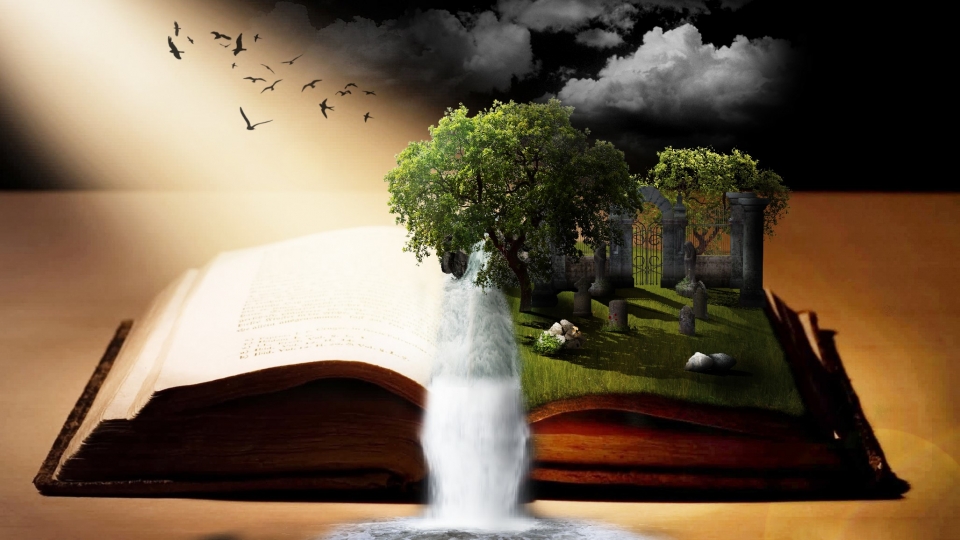
“Open up to imagination” image by Ryan Hickox on Flickr. Used under CC 2.0.
What it is: OK, so you’ve learned Freytag’s Triangle, which shows how a story’s internal framework represents the rise and fall of a crashing wave. Did you know a story’s structure can mirror the spiral of a hurricane? ENG 388 will expand upon lessons from previous writing workshops to further illuminate the possibilities of storytelling and imagination.
Why it matters: Albert Camus said, “Fiction is the lie through which we tell the truth.” One might argue the need for a whole lot more truth-telling these days.
Who’s in charge: Fiction writer Tucker Leighty-Phillips, a teaching assistant in the Department of English’s creative writing program, is the course instructor. Leighty-Phillips published the flash fiction story, “The Toddlers Are Playing Airport Again” in XRay Literary Magazine this past July.
Who should take it: Undergraduates of any major who are interested in fiction, short stories, creative writing or narrative and who have met specific English course prerequisites; see course catalog for details.
If you register: Intermediate Fiction Workshop (class # 18738) meets Mondays and Wednesdays from 3 to 4:15 p.m. on Zoom via ASU Sync.
11. ENG 205 – Introduction to Writing, Rhetorics and Literacies
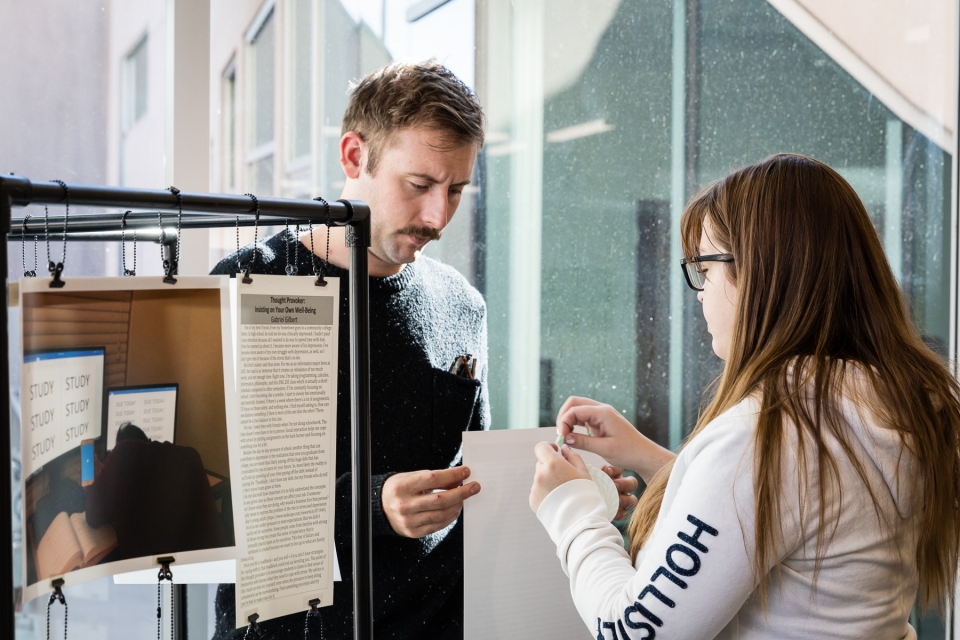
Students in Elenore Long's ENG 205 class work on an art exhibit, "Selves in Systems: A Rhetorical Arts Installation." Photo by Bruce Matsunaga/ASU.
What it is: This introductory survey illuminates how people use language and other symbols to carry out their daily activities. The goal in ENG 205 is to strengthen each student’s own repertoire of communicative skills and decision-making power, so they can produce and circulate work that matters in our risk-ridden world. Quite simply: This is a course in asking and taking up good questions.
Why it matters: How can we employ words sufficient to the challenges of the times? Not only is answering this question important practice for students’ postgraduation futures, but also for the here and now.
Who’s in charge: Professor Elenore Long, who also directs graduate studies in the Department of English, teaches this course. Long’s latest book is “A Responsive Rhetorical Art: Artistic Methods for Contemporary Public Life” (University of Pittsburgh Press, 2018).
Who should take it: Any undergraduate interested in language, writing, rhetoric, literacy, communication, advocacy, argument or public speaking who has met basic, first-year composition requirements.
If you register: Introduction to Writing, Rhetorics and Literacies (class # 19826) meets Tuesdays and Thursdays from 1:30 to 2:45 p.m. on Zoom via ASU Sync.
12. English 598 – Genre in the Writing Classroom: Research, Theory, Practice

Is refrigerator magnet poetry a "genre"? Photo from ASU’s 2017 celebration of National Day on Writing by Bruce Matsunaga/ASU.
What it is: This course for educators explores research and theory about genres of writing. By “genres,” we mean types of texts, processes used to compose them, practices used to understand them, and the social roles or rules that govern them. Making your head spin? ENG 598 will break down this complexity and ask students to put theory into practice – using vehicles such as op-eds, podcasts, social media or other – in a final project.
Why it matters: For educators, learning how to incorporate multigenre, real-world writing into classroom practice is critical for students’ current and future success.
Who’s in charge: Associate Professor Christina Saidy, who teaches in the English education program at ASU is the course instructor. She’s co-author of “Creating Literacy Communities as Pathways to Student Success: Equity and Access for Latina Students in STEM” (Routledge, 2018).
Who should take it: Any graduate student with an interest in language arts, education, teaching, classroom practices, writing, rhetoric, literacy, or linguistics and applied linguistics. May be particularly appropriate for in-service language arts teachers in need of professional development hours or students enrolled in ASU’s Master of Arts in English Education program.
If you register: Genre in the Writing Classroom (class # 26229) meets Tuesdays from 4:50 to 7:35 p.m. during Session A on Zoom via ASU Sync.
Top photo courtesy Martiza Estrada.
More Law, journalism and politics
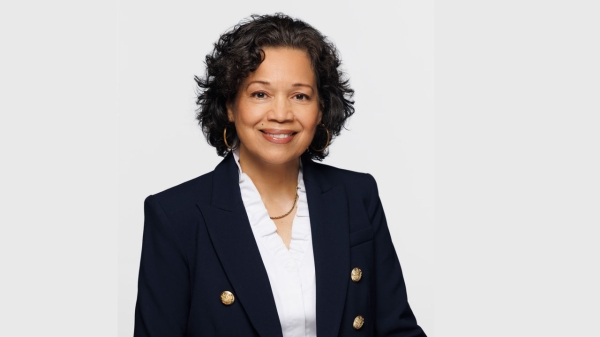
CBS News president to give keynote address at Cronkite School’s spring convocation
Ingrid Ciprián-Matthews, president of CBS News, will serve as the keynote speaker at Arizona State University’s Walter Cronkite School of Journalism and Mass Communication spring 2024 convocation. …

School of Politics and Global Studies director's new book explores mass violence
Why do people commit atrocities and why are certain groups, including religious and ethnic, more vulnerable to large-scale violence? These questions are explored in a new book by Güneş Murat Tezcür…
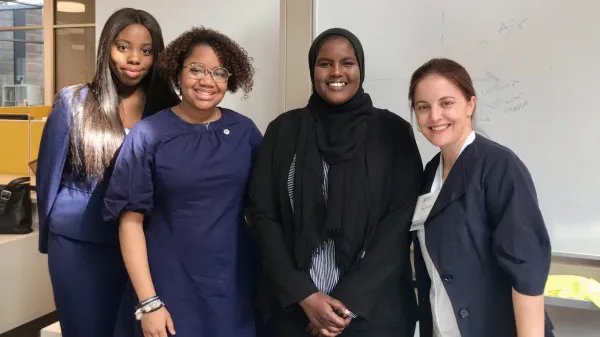
ASU faculty contributing to improvement of Wikipedia
Many academics have a love-hate relationship with Wikipedia. While the website has information about almost anything you can imagine, the credibility of that information is sometimes suspect. Tracy…
